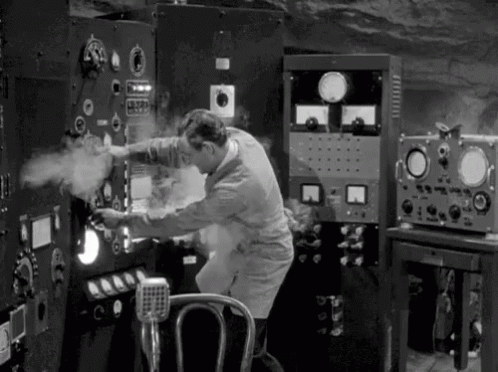Coffee Strength (Tutorial #1)
We get a lot of requests for strong coffee, and we aim to please; but believe it or not, you have more control over how strong the coffee is than we do.
When coffee is ground and hot water contacts it, tiny microscopic particles are dissolved into the water, and that’s how it gets its color, flavor, and aroma. So, when someone says, “I like my coffee strong,” what they are often unknowingly referring to is how many water-soluble coffee particles are extracted from the beans during the brewing process.
Of the numerous methods of brewing coffee, we’ve compiled the 6 most common, but this is by no means an exhaustive list. But, since this is our first class on making the perfect cup, we will just start here.
There are 4 things that determine the coffee’s strength in the final cup. The two easiest to control are what will be discussed in this post.
The four things that determine coffee strength are:
Grind
Coffee:Water Ratio
Water Temperature
Brewing Time
We will be discussing numbers 1 and 2 because these are the two easiest to control for most brewing methods.
The Grind
Grind size can actually be determined relatively easily, even if you aren’t using a fancy adjustable burr grinder. Of course, we would highly recommend that anyone grinding their own coffee use a burr grinder because, unlike blade grinders, the size of the grounds is both adjustable and consistent. Most burr grinders have some sort of method to adjust the coarseness or fineness of the grind. They can be automatic and electric or old-school and hand powered (a la Kevin Costner in Dances With Wolves)
A good rule of thumb is the more coarse the grind, the less coffee that comes in contact with the hot water. This is important to remember because the more coffee that comes into contact with the water, the more water-soluble particles will be extracted. It’s just like how fine table salt dissolves more quickly in water than rock salt. And the more water-soluble particles that are extracted, the stronger the coffee will be in your cup.
For instance, in a French press, the standard amount of time that the coffee grinds are in contact with water is 4 minutes. If you grind your coffee too fine, you will end up with a muddy and possibly very bitter cup.
Conversely, in a drip coffee maker, if the grind is too coarse, water will run too quickly through the grinds. That will mean that not enough water-soluble coffee particles will be extracted, and you will end up with weak, disgusting, undrinkable swill, fit for neither man nor beast. (Too harsh?)
So getting that grind size right is imperative.
The Ratio
This one is a little trickier to figure out without a scale, but understanding this principle will help guide you in making adjustments on your quest for the perfect cup.
Each coffee brewing method has its own optimal coffee to water ratio. It’s probably easiest to dial this in by using the metric system. We know that 1 milliliter of water weighs 1 gram. With that knowledge, if we measure our coffee mass in grams, it’s pretty easy to figure out our ratio.
Granted, most of us don’t have the mental capacity, pre-morning coffee, to figure this out (I have a hard enough time just finding the kitchen first thing in the morning) so figuring this out once and then standardizing it so that it requires very little thought in the morning will be a rewarding endeavor.
You’ll notice that a French press requires an average 1g of coffee for every 16g of water, whereas an espresso machine requires 1g of coffee for every 2g of water.
There are several reasons for this. Espresso machines force water through tightly compacted fine coffee grounds for about 20-30 seconds and produces a very small but very strong cup of coffee. French presses can make very delicious coffee, but a french press coffee is not an espresso, as you may have noticed.
In our home, we like our coffee strong and use a number of methods for brewing (yes, we are coffee nerds). We use scales from time to time to experiment with the various coffees that we roast, aiming to get a good average ratio using the most common methods our customers use.
We have also found that we can bring out different characteristics with different beans by making small adjustments or completely changing the brewing methods altogether, like highly-caffeinated mad scientists. This experimentation is what makes coffee brewing so much fun for us.
The infographic brewing guide provided with this tutorial is based upon industry standards, and the ratios that we use to taste test our coffee to achieve the best quality and highlight the most outstanding characteristic of each variety and blend that we roast.
This Coffee Ratio Calculator has metric to imperial conversions, and tons of additional helpful tips.
In future posts, we will get more into more specific detail about each brewing method, but this seemed like a good place to start to make sure you are getting the most out of every cup.
¡Disfruta tu cafe!
Profitez de votre café!
Aproveite seu café!
Furahia kahawa yako!
Genieß deinen Kaffee!
Goditi il tuo caffè!
Jwi kafe ou!



